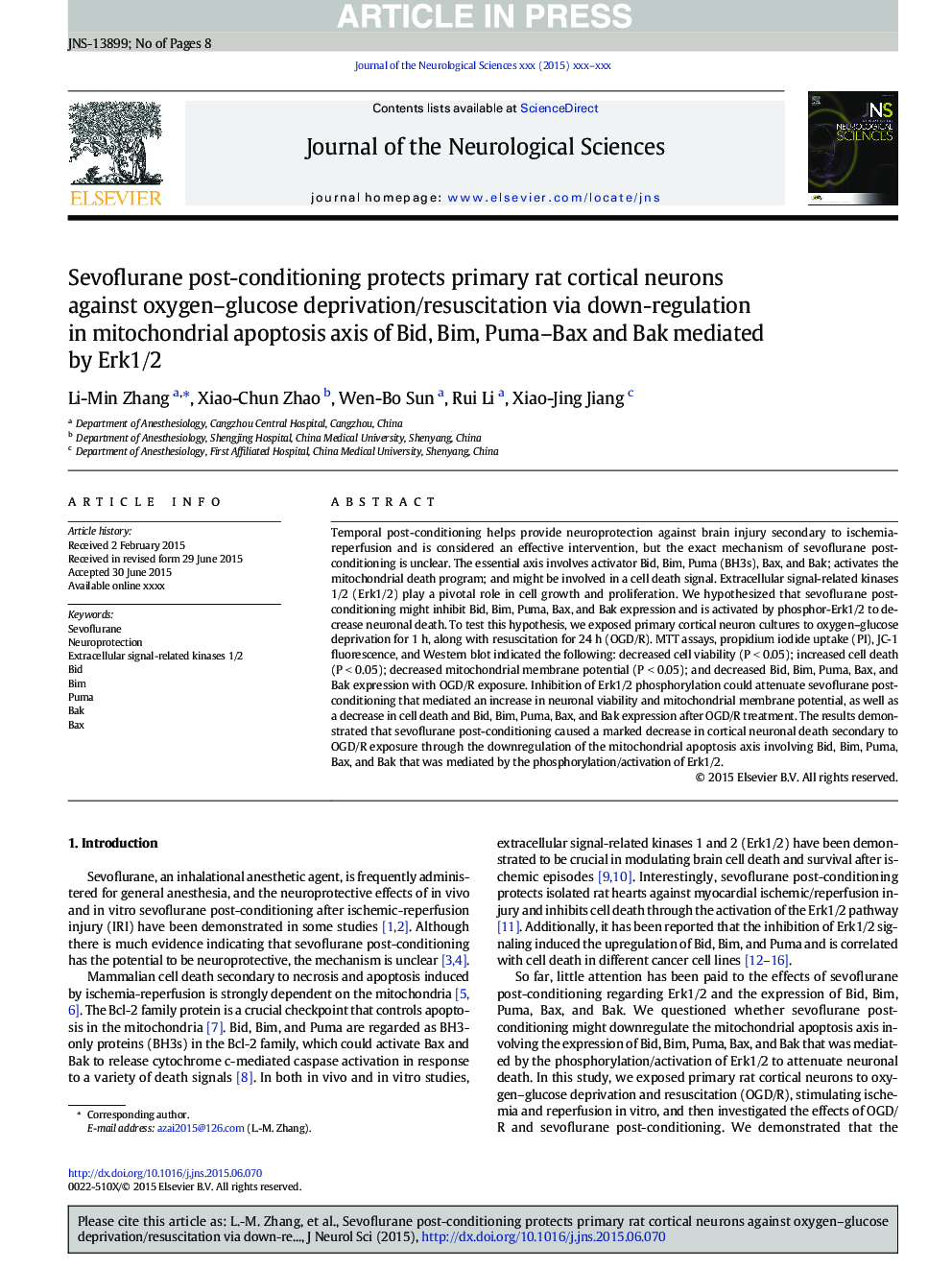| Article ID | Journal | Published Year | Pages | File Type |
|---|---|---|---|---|
| 8275316 | Journal of the Neurological Sciences | 2015 | 8 Pages |
Abstract
Temporal post-conditioning helps provide neuroprotection against brain injury secondary to ischemia-reperfusion and is considered an effective intervention, but the exact mechanism of sevoflurane post-conditioning is unclear. The essential axis involves activator Bid, Bim, Puma (BH3s), Bax, and Bak; activates the mitochondrial death program; and might be involved in a cell death signal. Extracellular signal-related kinases 1/2 (Erk1/2) play a pivotal role in cell growth and proliferation. We hypothesized that sevoflurane post-conditioning might inhibit Bid, Bim, Puma, Bax, and Bak expression and is activated by phosphor-Erk1/2 to decrease neuronal death. To test this hypothesis, we exposed primary cortical neuron cultures to oxygen-glucose deprivation for 1Â h, along with resuscitation for 24Â h (OGD/R). MTT assays, propidium iodide uptake (PI), JC-1 fluorescence, and Western blot indicated the following: decreased cell viability (PÂ <Â 0.05); increased cell death (PÂ <Â 0.05); decreased mitochondrial membrane potential (PÂ <Â 0.05); and decreased Bid, Bim, Puma, Bax, and Bak expression with OGD/R exposure. Inhibition of Erk1/2 phosphorylation could attenuate sevoflurane post-conditioning that mediated an increase in neuronal viability and mitochondrial membrane potential, as well as a decrease in cell death and Bid, Bim, Puma, Bax, and Bak expression after OGD/R treatment. The results demonstrated that sevoflurane post-conditioning caused a marked decrease in cortical neuronal death secondary to OGD/R exposure through the downregulation of the mitochondrial apoptosis axis involving Bid, Bim, Puma, Bax, and Bak that was mediated by the phosphorylation/activation of Erk1/2.
Related Topics
Life Sciences
Biochemistry, Genetics and Molecular Biology
Ageing
Authors
Li-Min Zhang, Xiao-Chun Zhao, Wen-Bo Sun, Rui Li, Xiao-Jing Jiang,
